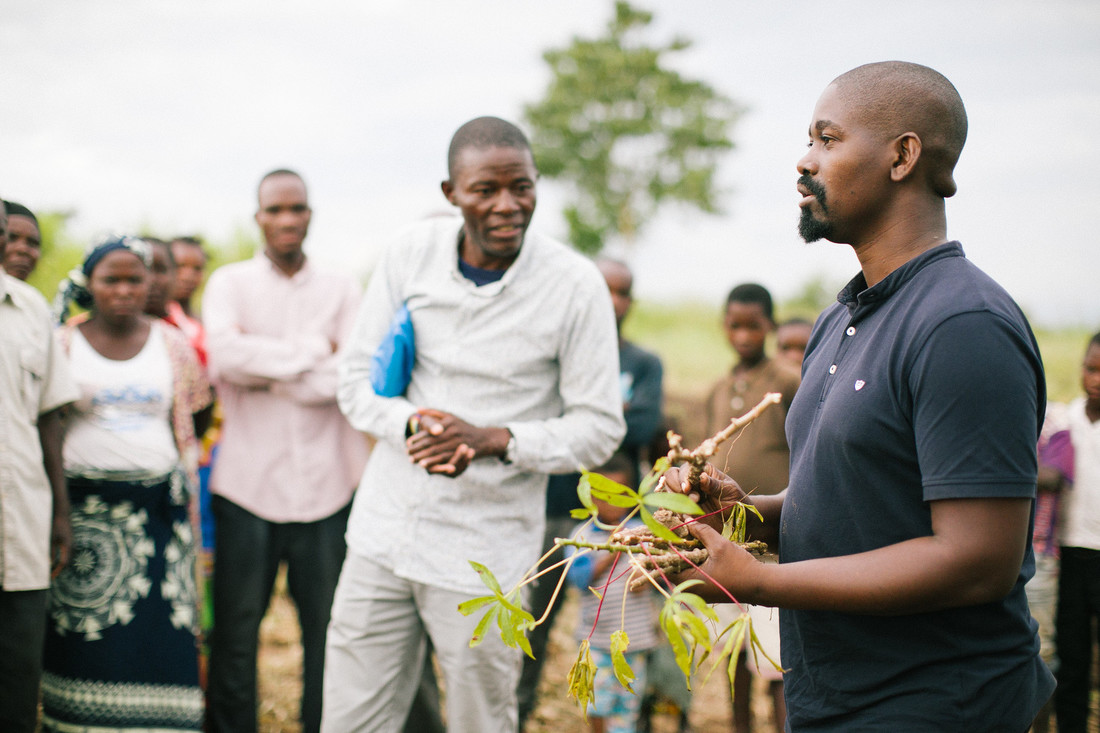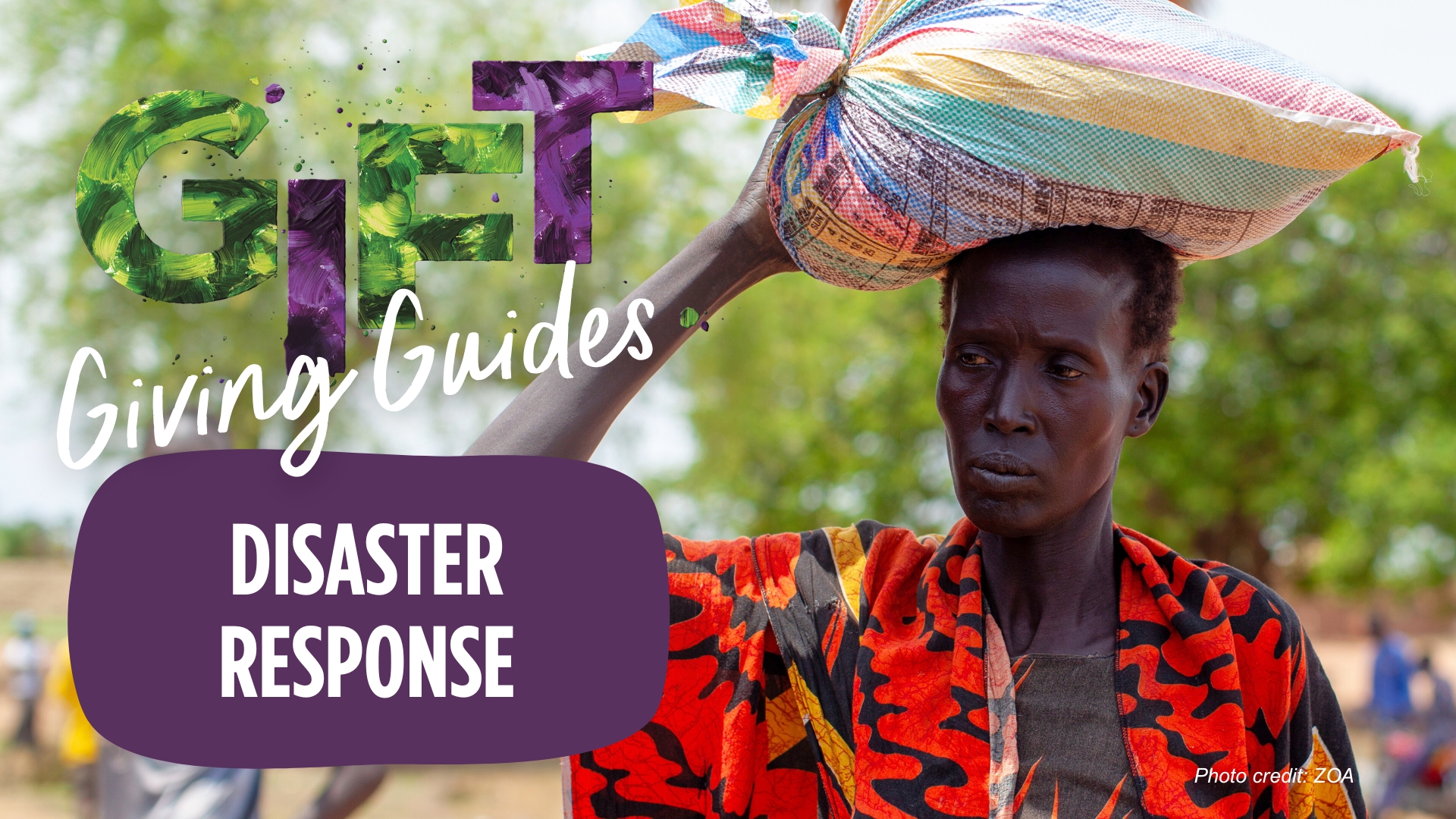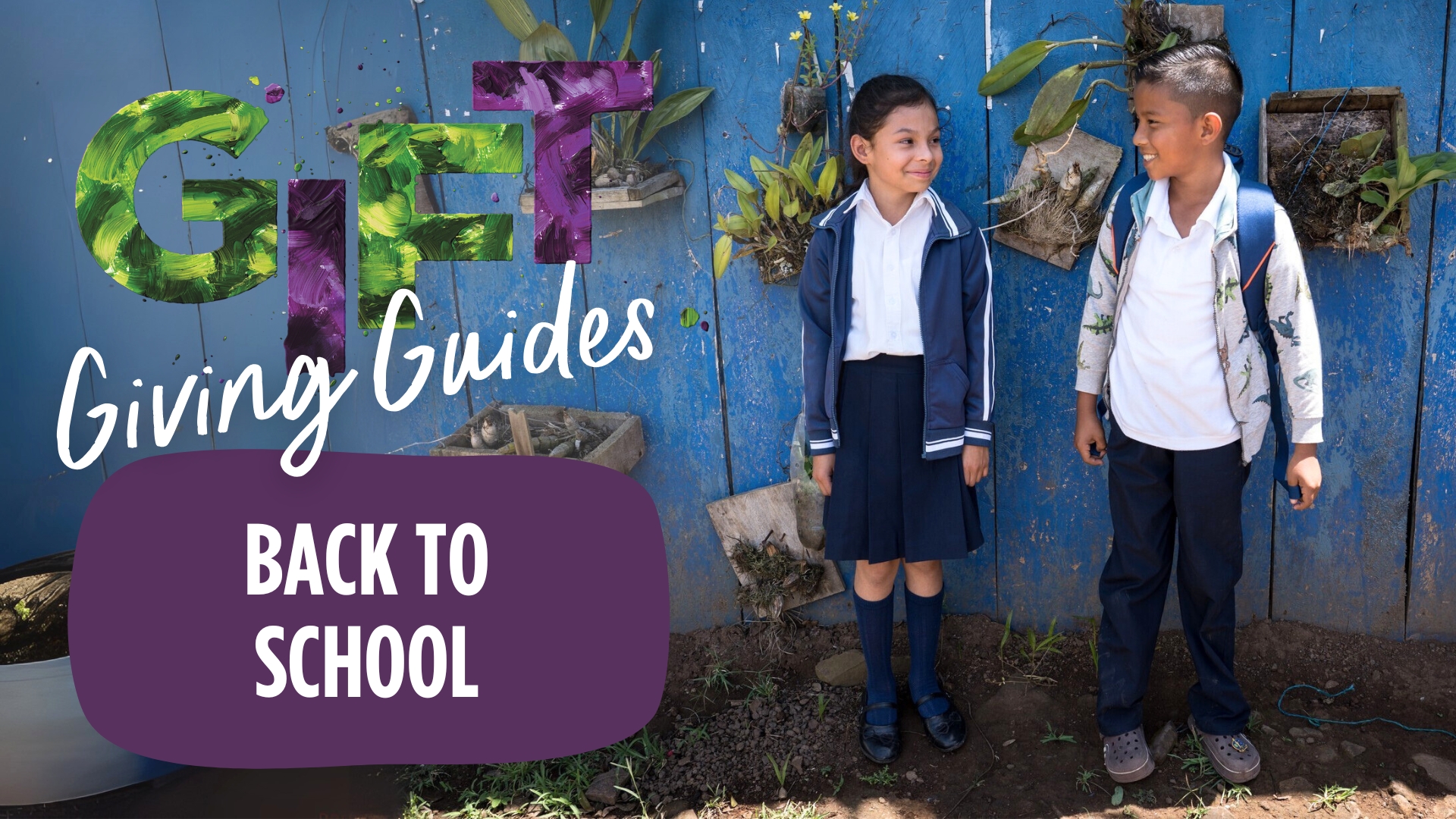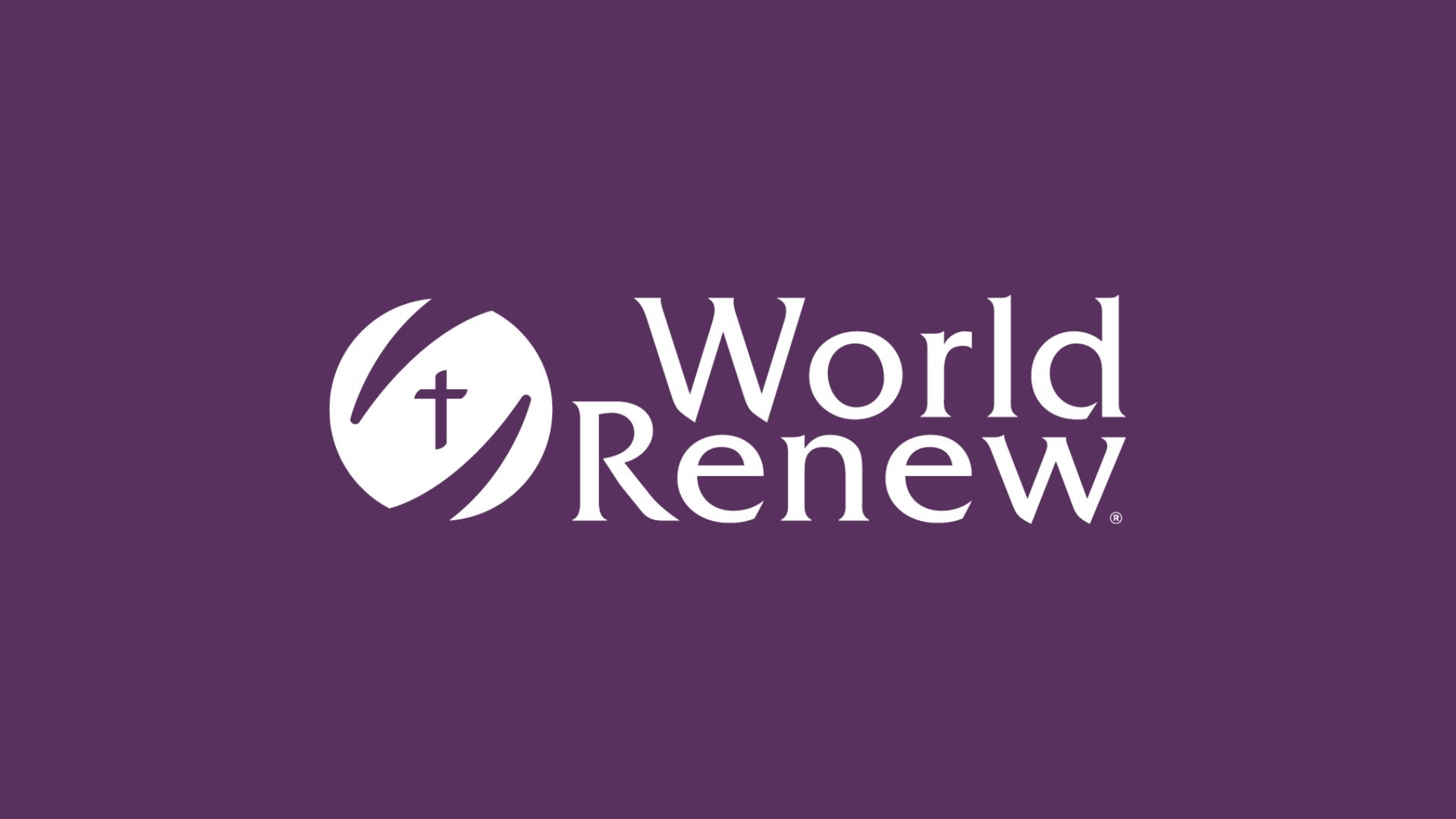The Importance of Asset Based Community Development

In the face of a crisis, nonprofit and charitable organizations might be tempted to focus on the challenges, drawbacks and identifying places that need improvement for those affected. In doing so, these organizations inherently promote a false narrative of themselves as the “helpful” provider swooping in to assist the “needy” community.
At World Renew, we’ve learned to embrace an alternative method of community support: Asset-Based Community Development (ABCD). ABCD offers a holistic approach that focuses primarily on the community using its own strengths and assets to address the issues and setbacks that they identify for themselves. In this respect, ABCD is more about encouraging people to sustainably help themselves rather than assuming that outsiders know what is best for the community.
In this article, we’ll look at the importance of asset-based community development but first, let’s learn more about what ABCD refers to and it’s key aspects.
What is asset-based community development?
Asset-based Community Development (ABCD) is a proactive approach that uses the existing strengths and abilities of a community and the supporting structures of local institutions to help facilitate change and development. By using the communities’ own assets, ABCD ensures that communities can grow stronger and more resilient for the future. Often, the work of ABCD begins by helping a community identify the local assets they possess that can match and address their local needs.
ABCD is both a community tactic and an approach to development that demands “the existing, but often not known resources” be identified and mobilized for sustainable community growth.
The process of asset-based development
Now that you have an idea of what ABCD stands for, let’s take a look at the process of ABCD and how it operates as a localized methodology for strengthening a community.
- Asset-Mapping – refers to how assets are identified in a community and then incorporated into the community development process.
- Appreciative Inquiry – can be defined as identifying a community’s past challenges and accomplishments and reviewing those experiences in order to learn from them.
- Community Conversations – are about starting discussions with community members regarding the needs and strengths they see within their own community. These discussions promote and contribute to the building of connections between members of a community.
- Participatory Appraisal – is the engagement of people within the community as leaders in the research process. The participation of these community members ensures the sharing of power and the democratization of the research process.
The difference of an ABCD model
The use of ABCD approaches is seen as unique in most situations where outside organizations and external groups are involved because it emphasizes the role of community members as developers. This not only includes learning the skills and abilities, interests, and visions of community members, but it also calls on those same people to take charge of the development process by leveraging their own capabilities and specialized expertise.
While the overall goal of asset-based community development is to promote local expertise and facilitate local ownership, as specified in the asset mapping module, community development organizations still play a critical role. These organizations often help identify the assets of the community alongside the assets of their organization, as well as facilitate the implementation of all development goals.
Five key aspects of asset community development
Assets can differ based on what a community is. Sometimes, an asset is measurable: like a storage space or a garden plot. Other times, an asset is simply an identified individual with a specific ability set. Regardless of the kind of asset, it is always valuable to take a holistic inventory of the strengths in a community.
Assets can be classified in five different ways.
1. Asset-based approach
Quite simply, this method is about identifying every kind of asset, according to the following categories:
- Gifts: Includes the talents, skills, or abilities of members of a community.
- Associations: Consist of small groups of people within the community working with a common interest.
- Institutions: Refer to government agencies, private businesses, and schools. They support a community with essential resources and establish a sense of civic responsibility.
- Place-Based Assets: Refer to those spaces that can be used for the benefit of a community: like a market or a well.
- Connections: The exchanges between people that facilitate the sharing of assets: like a co-op.
2. Asset-based and deficit-based comparison
By focusing on the strengths of a community, asset-based community development allows us to find innovative ways to improve a community, as well as identify the means of doing so. In an asset-based vs. deficit-based comparison, ABCD accomplishes this goal by differentiating between current or potential challenges and alternative solutions. Sometimes, you don’t even realize your community’s strengths until you see the alternatives and imagine how damaging they could be. For example, explore the table below:
Asset-Based
- Citizen-led
- Strengths Driven
- Opportunity focus
- Internally focused
- What is present can we build with?
Deficit-Based
- Provider led
- Needs Driven
- Problems focused
- Externally focused
- What is missing that we must find?
3. Power of associations
Local associations can be instrumental in guiding community development.
In ABCD, the power of associations sees benefits and achievements as derivatives of the shared history of a community. This method of classification pays particular attention to the social relationships in formal and informal partnerships and networks already existing within the community.
With an active engagement and empowerment strategy, the power of associations embraces a participatory approach to growth. It is a sustainable, economic and social growth plan led by the community.
4. Principles for asset-based community
Rather than starting with an audit of strengths, the approach of ABCD begins by establishing shared meaning and truths that the community can use to define their own problems and generate their own solutions:
- Everyone has gifts: Everybody in a community has something to offer.
- Build relationships in a community: For sustainable growth, people need to be connected. Community building is a deliberate attempt to create and nurture relationships.
- Citizens belong at the center: Citizens ought to be participants, not service recipients.
- Leaders involve others: Leaders from the larger community should engage others from different voluntary associations, congregations, neighborhoods, and local businesses.
- People care about something: Listening to people’s needs will inspire them to act in communities. The challenge is to find out what motivates them.
- Motivation to act must be identified: People deal with specific topics they strongly feel like addressing, contributing their personal effort and creativity. Every community is filled with motivation for action.
- Listen: Decisions should come from conversations where people are heard.
- Ask: It is more sustainable to generate ideas by asking questions than offering answers.
5. Asset-based community development in practice
Rather than starting with an audit of strengths, the ABCD approach embraces process and action in 3 key steps:
- Build connections between community members and organizations to transform beliefs and attitudes.
- Mobilize community members by exchanging knowledge and expertise and defining shared values in order to become independent and active.
- Invite a group of community members to discuss the core topics for organizing and creating a vision and strategy by mapping assets and mobilizing events.
World Renew and asset development
World Renew envisions a world where people feel and spread the love of God and work together to bring hope to communities. World Renew’s ongoing programs acknowledge that genuine, positive change only occurs from within a community. This acknowledgment encourages us to work in a manner that facilitates the empowerment of community members for long-term sustainable development through ABCD.
Our ABCD approach aims to strengthen the potential of existing community systems, enhancing both individuals’ and communities’ knowledge, expertise, and self-confidence: We do this by having community members lead our projects from the onset and identify assets and needs within their respective communities.
Want to see this model in action? World Renew and the Mara and Ukerewe Diocese of the African Inland Church of Tanzania (AICT-MUD) is a great example of the way that we employ ABCD practices in poverty-stricken communities within Northern Tanzania. You can learn more about this story here.
The importance of asset-based community
We can see that ABCD offers a more positive way to focus on the assets and strengths of every community rather than make assumptions about those communities based on challenges and needs. ABCD leads to the change and healing of the world by raising awareness and affirming a community’s abilities to facilitate connection and encourage citizens as the community is guided internally.
For Individuals
- Creates a sense of greater ownership over the lives they are living
- Creates an opportunity to understand oneself and be a part of the solution rather than the problem
- Enhances well being by improving power, intelligence, self-confidence, and social connection as well as skills for work and life
For the communities
- Asset-based approaches encourage inclusive community-driven growth. They harness community knowledge and expertise rather than depending on external associations and organizations.
- Asset approaches minimize the reliance and financial assistance of external organizations.
ABCD supports a large and growing movement for sustainable community development. We believe in the possibility, power, and promise that exists in every community. Asset-based community development begins with the gifts of people and their capacity to organize to create the world they want to see.
Great asset to a better future
Community development stems from a community’s dreams and vision for its future. At World Renew, we’re compelled by God’s deep passion for justice and mercy to join communities around the world in realizing those dreams by renewing hope, reconciling lives, and restoring creation.
You can support a family or join our volunteer teams to invest in a community’s dreams for its future. Together we’ll change stories and make a huge difference!
Promote sustainable farming practices
Climate-adaptive farming supports farmers and communities in ways that allow them to generate sufficient food in the near future to sustain themselves while also replenishing local soil, adapting to their local context (whether urban or rural), and making long term changes that ensure farming will be more profitable and sustainable for the next generation.
To increase agricultural production, preserve soil fertility, and make the most of scarce resources, World Renew comes alongside community farmers and village inhabitants to train them in composting, intercropping, and other methods such as drip irrigation.
Good education
Access to quality education is one of the most important ways to ensure that all young children do not suffer malnutrition as adults. Education helps children to be self-sufficient in adulthood by providing them with a pathway to higher learning and the experience and skills needed for stable-income jobs.
However, it is also vital for children to be nourished while at school. This not only motivates them to go to school but also increases concentration and performance while in the classroom.
Empower women
The majority of the farm work in the world is carried out by women. With 60-80 percent of the agricultural workers in Africa being women, most of them still have insufficient food to maintain themselves and their families despite the fact that they deal with food production all day.
Empowering women means giving access to agricultural resources, education, and financial services. It also includes promoting women’s access to good jobs and equal labor markets; which in turn contributes to long-term social and economic growth.
Take, for example, Ellen, who once struggled in desperation. With World Renew’s help, she was able to receive agricultural training, which has helped her become one of the 66 beneficiaries of her village. Today, she is an active farmer, growing vegetables and making extra income to support herself.
Feeding programs and donations
The immediate, if not the most sustainable, way to stop hunger is to provide food directly to those who are hungry. Food programs and successful food donations have proved an exceedingly effective way of achieving this. World Renew runs such programming through our International Disaster Response team, reaching out to refugee populations and those whose lives have been impacted by severe natural disaster or conflict.
While emergency food delivery is a vital component in addressing world hunger, all permanent food security solutions involve the equipping of communities to feed themselves.
Lifestyle changes
You can also help stop world hunger by tackling the roots of the problem in your local context. Starting at home, you can buy or eat locally and aim for zero food waste. You can also join an organization like World Renew to help address these problems internationally. By following these solutions above, you will discover the best way to educate yourself, your families, and your friends on how you can contribute to alleviating world hunger.
What we are doing to end world hunger
World Renew provides world hunger relief programs and pushes for the global movement to end hunger by empowering communities and responding to emergencies. This is why World Renew collaborates with farmers worldwide so they can overcome their agricultural difficulties and find long-term flourishing.
We also partner with local community leaders and NGOs to help foster sustainable community development so that communities can find holistic pathways out of poverty.
Eliminate world hunger together
Proverbs 22:9 teaches us – He who has a generous eye will be blessed, for he gives his bread to the poor.
Despite World Renew’s success in sustainable farming training, the economic fallout of the recent COVID-19 pandemic has caused families such as Kadzo’s to suffer due to the financial hardships that come with the pandemic. Which is why we need your help.
We are dedicated to achieving zero hunger by 2030. But we can’t do it alone, we need your support. Did you know that a gift of $200 gives a farmer the tools, training, and supplies they need to respond to climate change and grow enough food to feed their families for a year? You can donate to the World Hunger campaign or volunteer to do your part in helping to build a world where children no longer suffer from hunger with World Renew today.
MORE STORIES AND NEWS LIKE THIS
Giving Guide for Disaster Response
Gifts for Disaster Response When disaster strikes, timely support can make all the difference. Our gift catalog offers
Giving Guide for Back to School
Gifts for Back to School As the school year begins, children around the world are filled with anticipation—but
World Renew Urges Global Action on Gaza Crisis
World Renew Urges Global Action to Halt Starvation Crisis in Gaza World Renew



